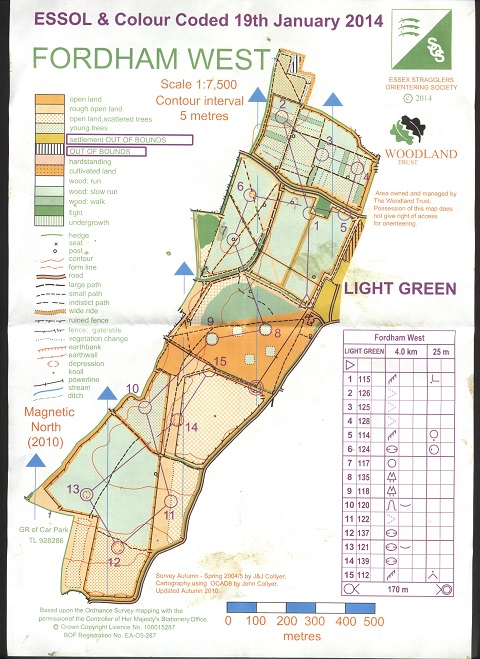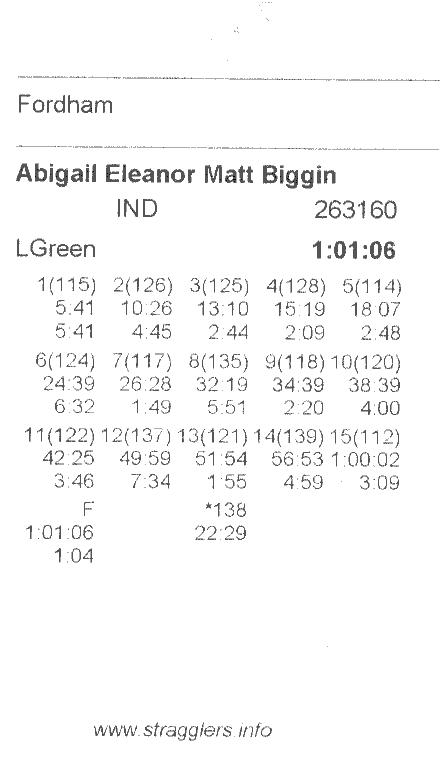I’m looking for a new challenge and I’ve always wanted to improve my navigation skills. I want to compete in events that require the use of a map and compass so I need to learn and practice the skills. I found out that the local orienteering group, The Essex Stragglers, were organising an event in my village so I jumped at the chance to find out more.
I’ve been to lots of running events and the format is pretty simple; turn up, register, get race number, pin on vest and then run. Orienteering is a little different though:
- Register
- Rent a dibber (a little electronic tag that says where you have been during the race)
- Pay
- Check in at start, clear the dibber
- Wait for next start time
- Collect map
- Race
- Download results (and give back the dibber)
It all seems pretty obvious now but at the time we found ourselves not really knowing what we were doing.
After choosing a distance you get a race card which looks like this:

I didn’t notice at the time but the control point numbers are included on this and this comes in useful during the race.
Next you’re off to the race start where you clear your dibber and get it checked by an official to ensures it’s clear. Now you stand in a grid waiting for the next time check to start. These happen every minute so you don’t wait long. For our race distance the map of the control points was pinned to the floor so whilst waiting for the start we could familiarise ourselves with the map.
Once you’ve been told to start you go to the first control point poke your dibber in to indicate you’ve started. You then grab a map and off you go.

You’ll notice that the race card we were given earlier is also included on the map. We didn’t notice that the control point numbers where included on the map and that would have been useful because on one occasion we located a control point, dibbed it and then realised that it wasn’t the one we were looking for. On the simple route we were doing this wasn’t a drama but halfway up a mountain with the wind howling it could well make a huge difference. Thinking you are somewhere you are not is a recipe for getting very lost.
So armed with our map we headed round the control points in the most direct route we could. That involved jumping fences and pushing through some undergrowth which was great fun. Before we knew it we had been on our feet an hour and had visited all the control points and were heading to the finish. After a refreshing sprint finish we’d done it. The only task left to do was to head to the download tent and hand over the data from our dibber. (We also handed back our rented dibber) You then get your results printed straight away and you head away with a little receipt of the time you got to each of the control points.

All told we really enjoyed our first orienteering event. I can’t say that we set out to compete with anyone else, we really just wanted a bit of fun in the countryside and enjoy a walk with a bit of a challenge thrown in. Personally I thought it was a great introduction because I got to figure out all the logistics without the stress of having to race as well. Next time out it will be a different story though because I’m going to try and compete. The main goal is to get super comfortable with a map and compass because I have some plans in the future to make use of those skills.
Thanks go to the Essex Stragglers for brilliantly organising this event. It was very slick and we were made to feel most welcome.